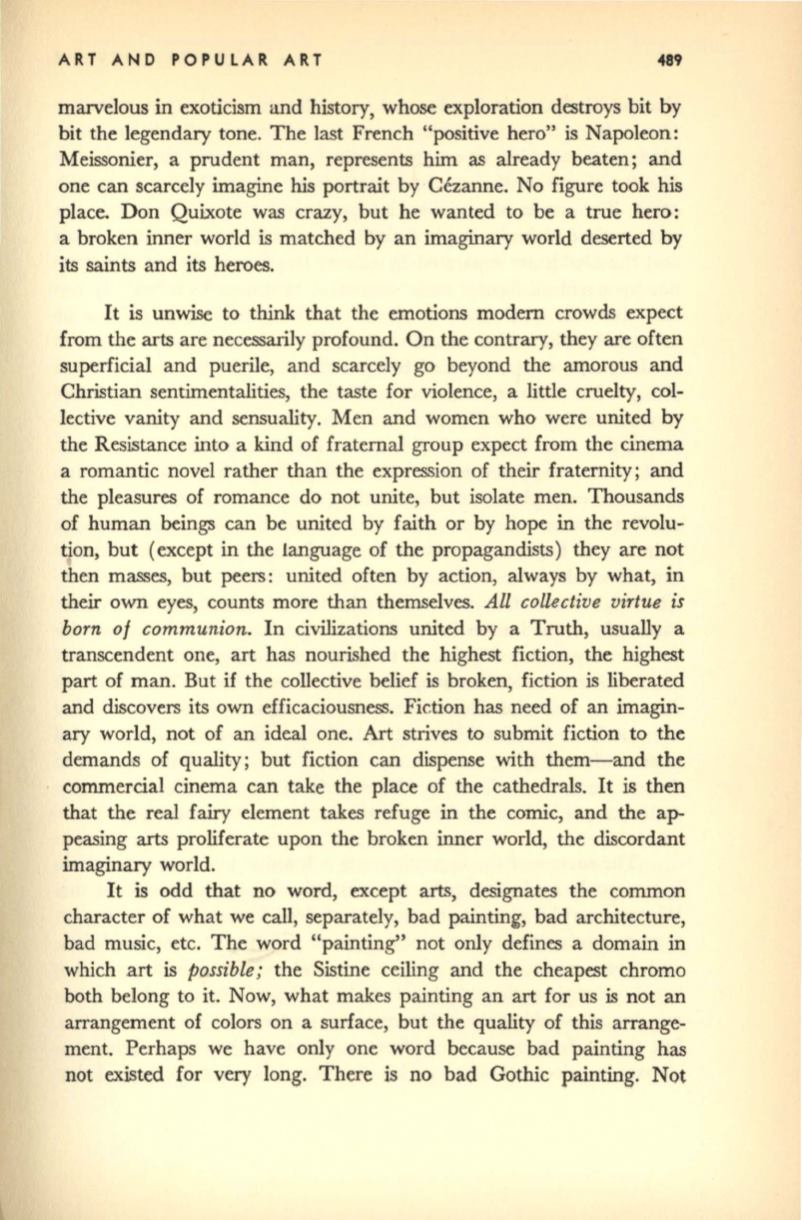
ART AND POPULAR ART
489
marvelous in exoticism and history, whose exploration destroys bit by
bit the legendary tone. The last French "positive hero" is Napoleon:
Meissonier, a prudent man, represents him as already beaten; and
one can scarcely imagine
his
portrait by Cezanne. No figure took his
place. Don Quixote was crazy, but he wanted to be a true hero:
a broken inner world
is
matched by an imaginary world deserted by
its saints and its heroes.
It is unwise to think that the emotions modern crowds expect
from the
arts
are necessarily profound. On the contrary, they are often
superficial and puerile, and scarcely go beyond the amorous and
Christian sentimentalities, the taste for violence, a little cruelty, col–
lective vanity and sensuality. Men and women who were united by
the Resistance into a kind of fraternal group expect from the cinema
a romantic novel rather than the expression of their fraternity; and
the pleasures of romance do not unite, but isolate men. Thousands
of human beings can be united by faith or by hope
in
the revolu–
tion, but (except in the language of the propagandists) they are not
then masses, but peers: united often by action, always by what, in
their own eyes, counts more than themselves.
All collective virtue is
born of communion.
In civilizations united by a Truth, usually a
transcendent one, art has nourished the highest fiction, the highest
part of man. But if the collective belief is broken, fiction is liberated
and discovers its own efficaciousness. Fiction has need of an imagin–
ary world, not of an ideal one. Art strives to submit fiction to the
demands of quality; but fiction can dispense with them-and the
commercial cinema can take the place of the cathedrals. It is then
that the real fairy element takes refuge in the comic, and the ap–
peasing arts proliferate upon the broken inner world, the discordant
imaginary world.
It is odd that no word, except arts, designates the common
character of what we call, separately, bad painting, bad architecture,
bad music, etc. The word "painting" not only defines a domain in
which art is
possible,.
the Sistine ceiling and the cheapest chromo
both belong to it. Now, what makes painting an art for us is not an
arrangement of colors on a surface, but the quality of this arrange–
ment. Perhaps we have only one word because bad painting has
not existed for very long. There is no bad Gothic painting. Not


